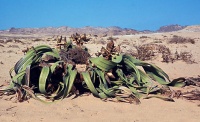Garden
From The Art and Popular Culture Encyclopedia
| "Imaginary gardens with real toads in them [...]" --Marianne Moore |

|
Related e |
|
Featured: |
A garden is a planned space, usually outdoors, set aside for the display, cultivation, and enjoyment of plants and other forms of nature. The garden can incorporate both natural and man-made materials. The most common form today is known as a residential garden, but the term garden has traditionally been a more general one. Zoos, which display wild animals in simulated natural habitats, were formerly called zoological gardens. Western gardens are almost universally based on plants, with garden often signifying a shortened form of botanical garden.
Some traditional types of eastern gardens, such as Zen gardens, use plants such as parsley. Xeriscape gardens use local native plants that do not require irrigation or extensive use of other resources while still providing the benefits of a garden environment. Gardens may exhibit structural enhancements, sometimes called follies, including water features such as fountains, ponds (with or without fish), waterfalls or creeks, dry creek beds, statuary, arbors, trellises and more.
Some gardens are for ornamental purposes only, while some gardens also produce food crops, sometimes in separate areas, or sometimes intermixed with the ornamental plants. Food-producing gardens are distinguished from farms by their smaller scale, more labor-intensive methods, and their purpose (enjoyment of a hobby rather than produce for sale). Flower gardens combine plants of different heights, colors, textures, and fragrances to create interest and delight the senses.
Gardening is the activity of growing and maintaining the garden. This work is done by an amateur or professional gardener. A gardener might also work in a non-garden setting, such as a park, a roadside embankment, or other public space. Landscape architecture is a related professional activity with landscape architects tending to specialise in design for public and corporate clients.
Contents |
In art and literature
- The Garden of Eden
- Romance of the Rose
- Nathaniel Hawthorne's short-story "Rappaccini's Daughter"
- Wolfgang Amadeus Mozart's opera La finta giardiniera
- Frances Hodgson Burnett's The Secret Garden
- Elizabeth von Arnim's novels Elizabeth and Her German Garden and Solitary Summer
- John Steinbeck's short-story The Chrysanthemums
- Midnight in the Garden of Good and Evil
Other similar spaces
Other outdoor spaces that are similar to gardens include:
- A landscape is an outdoor space of a larger scale, natural or designed, usually unenclosed and considered from a distance.
- A park is a planned outdoor space, usually enclosed ('imparked') and of a larger size. Public parks are for public use.
- An arboretum is a planned outdoor space, usually large, for the display and study of trees.
- A farm or orchard is for the production of food stuff.
- A botanical garden is a type of garden where plants are grown both for scientific purposes and for the enjoyment and education of visitors.
- A zoological garden, or zoo for short, is a place where wild animals are cared for and exhibited to the public.
Namesakes
See also
See also (2)
- Around the World in 80 Gardens
- Bāgh
- Bottle garden
- Community gardening
- Garden centre
- Garden tourism
- Gardener
- Gardening
- History of gardening
- Hortus conclusus
- List of botanical gardens
- List of companion plants
- List of gardens
- List of public gardens
- Museum of Garden History
- National Public Gardens Day
- Paradise, originally from an Iranian word meaning "enclosed," related to Garden of Eden
- Verde Pulgar, a software application that assists with gardening
- The Victory Garden (TV series)
- Walled garden
- Water garden


